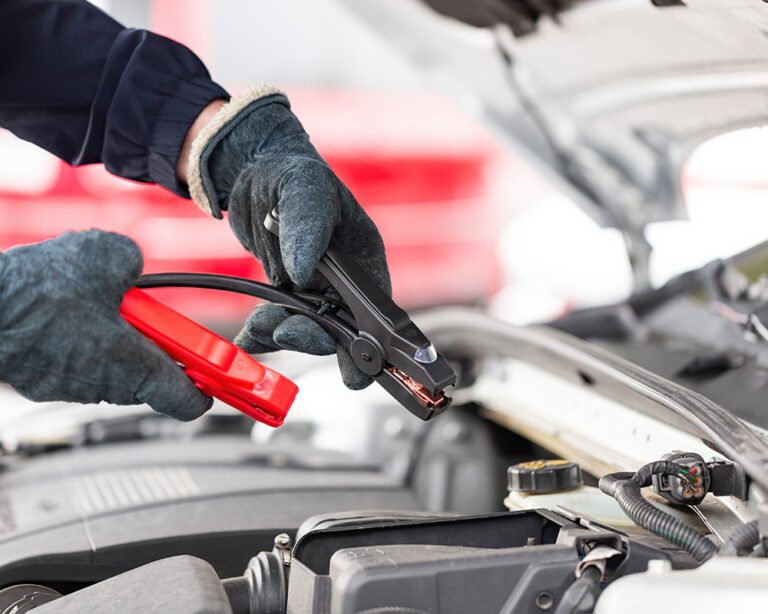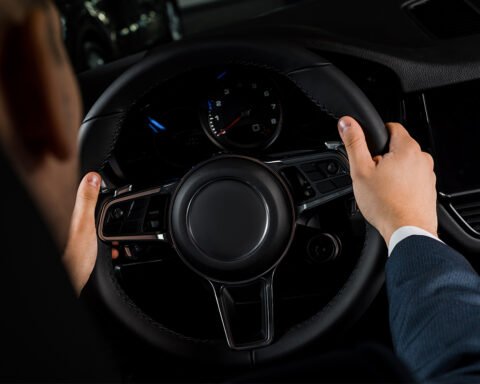A dead car battery can catch you off guard, leaving you stranded at the most inconvenient times. Fortunately, with a little knowledge and resourcefulness, you can quickly get back on the road without waiting for professional help.
In this blog, we’ll explore practical hacks to deal with a dead battery and get your car moving again.
Jumpstart Your Car
The most common solution for a dead battery is a jumpstart. A dead battery can leave you stuck, but jumpstarting is quick and easy. Use jumper cables to connect the positive terminals first, then the negative terminal of the donor car to a metal surface on the dead car. Start the donor car, let it run, then start the dead car. Once started, disconnect cables in reverse order and let the car run for 15-20 minutes to recharge. Keep a portable jump starter, check for corrosion, and test your battery regularly to avoid future issues.
Here’s how to do it safely:
What You’ll Need:
Jumper cables
A second vehicle with a charged battery. Jumper cables are a must-have for every driver, providing a quick solution to a dead battery. To use them, connect the positive cable to the positive terminals on both cars, then attach the negative cable to the donor car’s negative terminal and an unpainted metal surface on the dead car. Start the donor car, then the dead one, and you’ll be back on the road in no time. Keep jumper cables handy to ensure you’re always prepared for battery troubles, minimizing downtime and roadside frustration.
Steps:
Position the vehicles close enough for the cables to reach, but ensure they’re not touching.
Turn off both cars and connect the red (positive) cable to the positive terminals on both batteries.
Attach the black (negative) cable to the negative terminal of the good battery and the other end to an unpainted metal surface on the dead car.
Start the working car and let it run for a few minutes.
Attempt to start the dead car. Once it starts, let both cars run for a few more minutes before disconnecting the cables in reverse order.
Push Start for Manual Cars
If you drive a manual transmission vehicle, a push start can save the day. Push starting a manual car is a method to start the engine when the battery is dead. With the ignition in the “on” position and the car in gear, the driver releases the clutch after the car is pushed or rolling downhill to turn the engine over. This works by using the car’s momentum to start the engine, but it should only be used when necessary, as it can strain the transmission. Modern cars with advanced electronics often cannot be push-started. Ensure the parking brake is off and the car is on a slight decline for best results.
Steps:
Turn the key to the “ON” position.
Put the car in second gear and depress the clutch.
Have someone push the car to get it rolling.
Once the car reaches a decent speed, release the clutch quickly while pressing the accelerator.
This method forces the engine to crank and can get your car started without external power.
Use a Portable Jump Starter
Portable jump starters are a lifesaver and easy to use. A portable jump starter is a compact, battery-powered device that helps start a car with a dead battery. Simply connect the jump starter’s clamps to the car’s battery terminals, ensuring correct polarity, and turn on the device. The jump starter will provide a surge of power to start the engine without needing another vehicle. It’s a convenient and safe solution for emergencies, especially in remote locations, as it eliminates the need for external help or long cables. Most models are lightweight, easy to store, and can also charge other devices, making them a versatile tool for drivers.
Steps:
Connect the jump starter’s cables to the battery terminals (red to positive, black to negative).
Turn on the jump starter and attempt to start your car.
Once your car starts, disconnect the jump starter and let your engine run to recharge the battery.
Portable jump starters are compact and can be stored in your car for emergencies.
Clean Corroded Battery Terminals
Sometimes, a dead battery might be the result of corroded terminals. Cleaning them can restore the connection. Cleaning corroded battery terminals is essential for maintaining a car’s electrical system. Start by disconnecting the negative terminal first, followed by the positive terminal. Use a mixture of baking soda and water to neutralize the corrosion, applying it with a brush or cloth. Scrub the terminals gently to remove built-up grime, then rinse with clean water. Dry the terminals thoroughly and reattach the cables, starting with the positive terminal. For added protection, you can apply a battery terminal cleaner or petroleum jelly to prevent future corrosion. This simple maintenance can improve battery performance and prolong its life.
What You’ll Need:
Gloves and safety glasses
Baking soda and water
An old toothbrush or wire brush
Steps:
Mix baking soda with water to create a paste.
Apply the paste to the terminals and scrub gently with the toothbrush.
Wipe clean with a damp cloth and reconnect the terminals securely.
Call for Roadside Assistance
If the above methods don’t work, it might be time to call for professional help. Many insurance policies or car recovery services offer 24/7 roadside assistance, including battery-related issues.
Preventive Tips to Avoid a Dead Battery
Regular Battery Checks
Inspect your battery regularly for signs of wear, corrosion, or loose connections.
Turn Off Electrical Components
Always turn off lights, radio, and other electronics when the car isn’t running.
Drive Regularly
Short trips may not give your battery enough time to recharge. Drive for at least 20-30 minutes to keep it healthy.
Keep a Battery Tester
A battery tester can help you monitor its health and avoid unexpected failures. A battery tester is a handy tool for monitoring the health of your car’s battery. It helps determine if the battery is holding a charge and if it’s functioning properly. Simply connect the tester to the battery terminals, ensuring proper polarity, and it will display the voltage or state of charge. Regular use of a battery tester can help identify weak or failing batteries before they leave you stranded, enabling you to replace them in time. This simple device is essential for maintaining reliable car performance, especially in extreme weather conditions.
Stay Prepared and Stay Safe
Dealing with a dead battery doesn’t have to be a stressful experience. By learning these simple hacks and keeping essential tools in your car, you can handle such situations with confidence. Remember, staying prepared is the best way to ensure you’re never left stranded.
Get back on the road quickly and safely with these tips—and let nothing hold you back from your journey!






